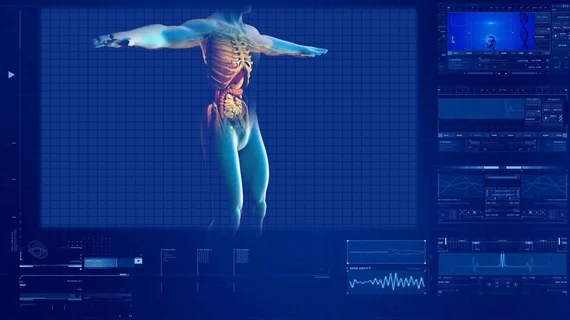Holograms speed tumor treatment, boost interventionalist confidence
Researchers have successfully piloted the use of augmented reality for guiding tumor ablation, completing the treatment in five patients with cancers of the liver.
Charles Martin III, MD, and colleagues at Cleveland Clinic used CT image data with Microsoft’s HoloLens technology to display a hologram directly onto each patient. The hologram projected markers precisely localizing tumors and margins.
To ensure safety in the proof-of-concept project, the physicians used ultrasound for first-line probe guidance, comparing the sonogram data with that from the holograms.
Presenting their work June 14 in a virtual session of the Society of Interventional Radiology’s 2020 Annual Scientific Meeting, the team reported that post-procedure imaging showed no additional treatment was needed three months post-procedure.
Further, Martin and colleagues noted that the holographic guidance yielded faster tumor localization than standard image guidance without sacrificing physician confidence in optimal ablation or avoidance of noncancerous tissue.
“This technique can be used intra-procedurally to check the accuracy and quality of the treatment, as well as pre-procedurally to engage with the patient in their own care,” Martin adds in a news release sent by SIR. “We can change 2D images into holograms of a patient’s distinct anatomy so that both the physician and the patient get a better understanding of the tumor and treatment.”

